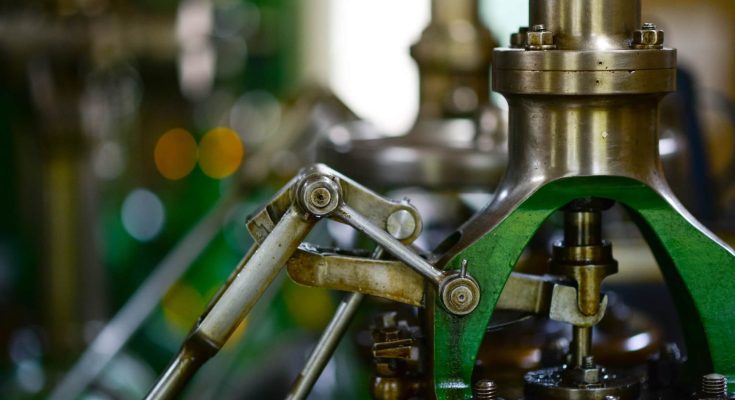Precision machining has come a long way, and with the help of technology, it’s only going to get better. In this article, we’ll take a look at some of the most important precision machining technologies – small parts and milling – and see how they can be used to improve your manufacturing process.
What is precision machining?
cnc small parts manufacturing is a process that uses intricate tools and techniques to create parts with extremely tight tolerances. This allows for more precise and accurate designs, which can result in products that are more reliable and robust. In order to achieve precision machining, it’s important to have the right tools and equipment.
One of the key tools necessary for precision machining is the lathe. A lathe is a machine that can turn different shapes, including round objects. It can also be used to cut threads, produce spiral cuts, or do other types of specialized work.
Another tool essential for precision machining is the milling machine. A milling machine is similar to a lathe, but it has bigger blades that can cut through thicker materials. It’s usually used to make round shapes out of metal or other materials.
Finally, there’s the CNC (computer-aided manufacturing) machine. A CNC machine is similar to a milling machine, but it uses computer software to control the cutting process. This makes it possible to create extremely precise parts with very little waste material.
How is a precision machined part made?
In order for a precision machined part to be produced, many steps must be followed. The first step is designing the part. This involves creating a CAD drawing or model of the part that can be manipulated in a computer program. Once the design is complete, the tooling necessary to produce the part must be created. This includes the actual machines used to make the part and the specific tools needed to fabricate it. After the tooling is created, it must be calibrated and tested in order to ensure accuracy. Once all of this is completed, production can begin.
Why use precision machined parts for
Precision machined parts can provide a number of benefits over cast or fabricated parts. They are typically less expensive, more accurate, and easier to produce. Additionally, precision machined parts often have a longer lifespan due to their greater accuracy and fewer manufacturing defects.
Precision machining can also improve the overall performance of a machine by reducing wear and tear on the components it is working with. This is especially important in high-production environments where machines are operated frequently under heavy loads.
Types of Machine Tool
There are a variety of types of machine tools used in precision machining. These include: vertical machining centers, horizontal machining centers, drill presses, milling machines, lathes, and CNC (computer numerical control) machines. Each has its own advantages and disadvantages for various types of parts or tasks that can be performed.
Vertical machining centers are the most common type of machine tool and are used for high-speed cutting and shaping of parts. They can be used with a variety of materials, including metals such as steel and aluminum, plastics, and composites. They are typically equipped with multiple spindles that rotate around a central axis to produce the desired cuts or shapes.
Horizontal machining centers are similar to vertical machining centers but are designed for more complex tasks such as milling or drilling. They typically have multiple axes that allow them to make multiple simultaneous cuts or turns. They are also much faster than vertical machining centers and are often used for more detailed workpieces.
Drill presses are often used in conjunction with horizontal machining centers to perform drilling operations. They have a large chuck that can hold large parts while the press applies pressure to the part from above to create the desired hole or groove.
Milling machines are typically used for smaller tasks such as rabbeting or slots in parts. They have a rotating head that rotates around a central axis while the milling cutter moves around it to
Types of Machine Tools
There are many types of machine tools that can be used to create small parts and precision machined parts. The main types of machine tools include: CNC machines, manually operated machines, lathes, milling machines, and drill presses.
CNC Machines
The most common type of machine tool is a CNC machine. CNC machines use computer-aided design (CAD) software to create the patterns for the parts that will be machined. This software allows the operator to input the dimensions of the part and then generate a series of instructions that will guide the machine in creating the part.
Manually Operated Machines
Manually operated machines use a variety of manual techniques to create small parts and precision machined parts. These techniques include: turning, drilling, milling, grinding, and tapping.
Lathes
Lathes are also commonly used to create small parts and precision machined parts. Lathes work by turning a mandrel around which the part is being machined. This rotates the part so that it can be cut evenly into shape. Lathes are very versatile machines and can be used to turn almost any type of material. They can also be used to create very precise shapes difficult for other types of machine tools to handle.
Milling Machines
Milling machines are another type of machine tool that is frequently used to create small parts and precision machined parts. Milling machines work by using disks or
Determining the size and shape of a part made with precision machine tools
Precision machine tools enable manufacturers to produce small parts with accuracy and precision. In this article, we will discuss the factors you need to consider when determining the size and shape of a part made with precision machine tools.
The first step is to determine the desired size of the part. This can be done by measuring the original part or by drawing a CAD model of it. Then, you need to calculate the necessary dimensions for the precision machine tool required to produce the desired size.
Next, you need to figure out how much tolerance your part needs. This refers to how much variation in dimensions your part can have and still be considered within spec. For example, if you are producing a part that is 0.5 inches wide but has a tolerance of +/-0.25 inches, then there can be a maximum width variation of 0.75 inches before your part would no longer meet specification.
Once you have determined all of these dimensions, you need to create a layout for your part using a CAD program. This will help guide the machining process and ensure that your part remains within tolerances during fabrication. Read More https://yijinsolution.com/



